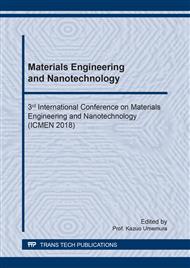p.171
p.178
p.187
p.192
p.198
p.207
p.214
p.219
p.224
Study of Productivity Improvement on Precast Concrete by Calcium Silicate Hydrate Type Accelerator
Abstract:
The effect of early strength improvement of concrete with C-S-H type accelerator was studied for precast concrete efficient production under the steam curing condition. From the mortar test result, the effect of this improvement was confirmed to tend lager as the W/C is lower. This accelerator could short the curing time for 0.5-2.0 hours under the same temperature condition, and could reduce the curing temperature under the same curing time. Then the compressive strength was considered to be predicted by some formula, and it showed higher estimation accuracy of the Arrhenius’s Law than that of the Maturity Method.
Info:
Periodical:
Pages:
214-218
Citation:
Online since:
October 2018
Authors:
Price:
Сopyright:
© 2018 Trans Tech Publications Ltd. All Rights Reserved
Share:
Citation:


